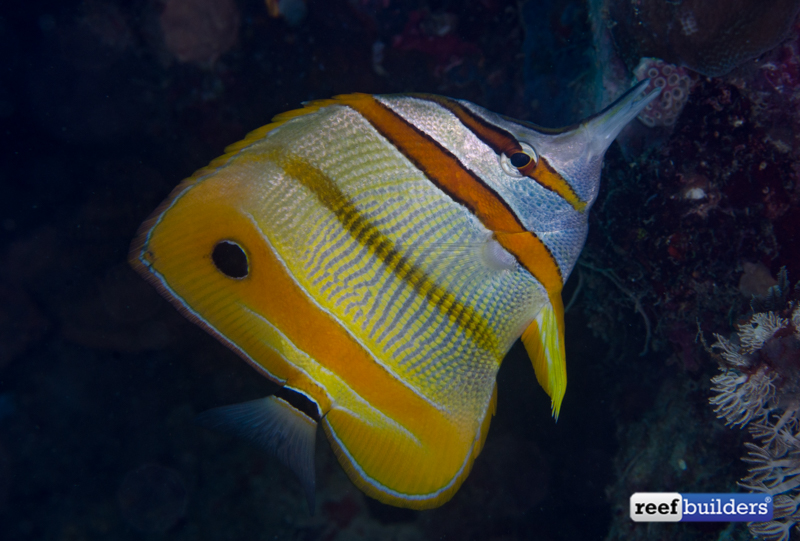The copperband butterflyfish, Chelmon rostratus, is one of those iconic reef fish that is incredibly popular with divers and aquarists alike. This species of reef fish shows very little variation across its wide natural distribution, with the only deviations from the norm being the Australian sister species, Chelmon marginalis, and the detestable Chelmon muelleri.
The copperband is a celebrated aquarium fish that is welcome both in fish tanks, and in some reef aquariums where it can serve as a guard dog against Aiptasia infestation. We’ve seen probably a thousand specimen Chelmon rostratus in private tanks, public aquariums, fish stores and wholesalers but they are all so identical as if they were stamped out by the same mint.

Just a few weeks ago we were musing about how we never see any aberrations of the copperband butterflyfish – even longnose butterflyfish appear in a melanistic form and a ghostly white Forcipiger has also been documented- but Chelmon rostratus is about as cookie-cutter as a marine fish can be. This random thought about the consistency of Chelmon coloration must have been serendipitous because last week while diving Raja Ampat we were treated to an unexpected deviation from the normal copperband.

While diving the shallow reef slopes on the coastal reefs of Waigeo Island, West Papua, Indonesia, a part of Raja Ampat and the greater Bird’s Head Seascape, we saw a very special-looking Chelmon rostratus which had more than a little bit of an unusual coloration. The most obvious departure from the standard-issue uniform for this species is a ghostly middle bar which instead of being a nice solid copper orange and bordered in black, this central stripe was thinner, and only a pale ochre color.
At first we thought that this was a one-off aberration of copperband butterflyfish, not to be unexpected for the richness of marine-life that is found in this part of the world. But then we kept seeing the unusual Chelmon coloration again and again, until we realized that all the copperband butterflyfish showed this unique coloration, and not a single “normal” C. rostratus was sighted on the reefs that we dove.

We knew that this color form of copperband butterflyfish was truly special when we saw the fish traveling about the reef in pairs. Upon returning to civilizations, inspecting our photographs, and doing a little bit more background research, we noticed that we weren’t the only ones who’ve documented this bizarre copperband butterflyfish, other photographers had snapped pics of it too.
Photos clearly show the Raja Ampat form of Chelmon rostratus as not only having a greatly diminished central bar like its sister species Chelmon marginalis, but it also has a preponderance of yellow coloration suffused throughout its body. The pelvic fins are highly yellow, the last body bar is bordered in yellow, and the light scribbling on the body of normal copperbands is greatly pronounced in this Raja Ampat form.

As much fish-watching work that has been done in Raja Ampat, we’re surprised that this novel color form of the recognizable copperband butterflyfish is not better known. The novel coloration of Forcipiger wanai combined with different morphology warranted its elevation to full species status, but we’re unaware whether the same analysis was done on the Chelmon cf. rostratus from Raja Ampat.
Perhaps future work into this fish will either recognize species or subspecies status, adding a touch more diversity to an otherwise very homogenous genus. Either way it was a special treat to become aware of the special coloration of the copperband butterflyfish of Raja Ampat by seeing it ourselves, 40 feet underwater.





